
Concept explainers
(a)
Interpretation: The Fischer projection formula for
Concept introduction: The Fischer formula can be drawn by using the following rules.
- Ø The chiral center is assumed to be in the plane of paper.
- Ø Two of the bonds are considered pointing towards the page.
- Ø Two of the bonds are considered pointing outwards of the page.
- Ø The intersection of horizontal and vertical lines represents the chiral centre.
- Ø The horizontal lines are the lines pointing outwards of the page.
- Ø The vertical lines are the lines pointing towards the page.
(a)
Answer to Problem 18.63EP
The Fischer projection formula for
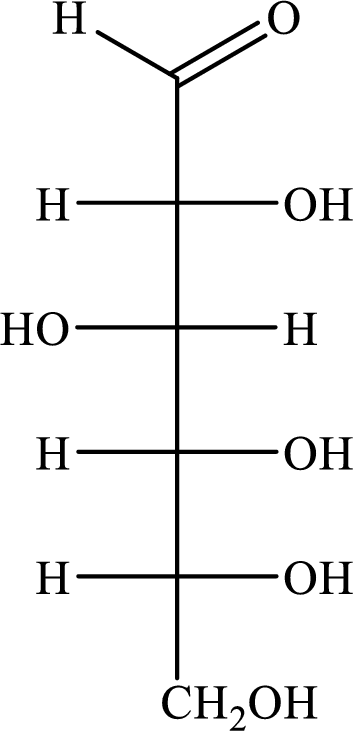
Explanation of Solution
The given molecule is
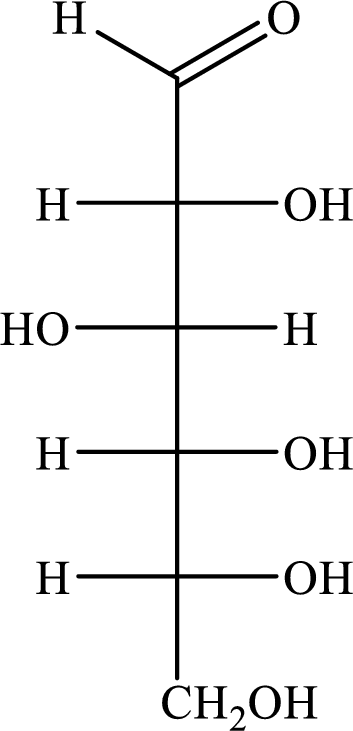
The monosaccharide,
(b)
Interpretation: The Fischer projection formula for
Concept introduction: The Fischer formula can be drawn by using the following rules.
- Ø The chiral center is assumed to be in the plane of paper.
- Ø Two of the bonds are considered pointing towards the page.
- Ø Two of the bonds are considered pointing outwards of the page.
- Ø The intersection of horizontal and vertical lines represents the chiral center.
- Ø The horizontal lines are the lines pointing outwards of the page.
- Ø The vertical lines are the lines pointing towards the page.
(b)
Answer to Problem 18.63EP
The Fischer projection formula for
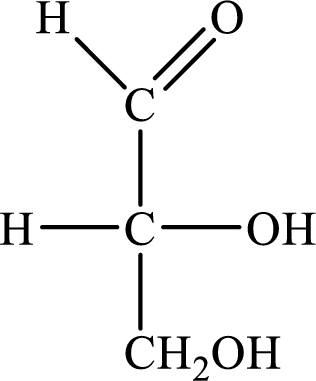
Explanation of Solution
The given molecule is
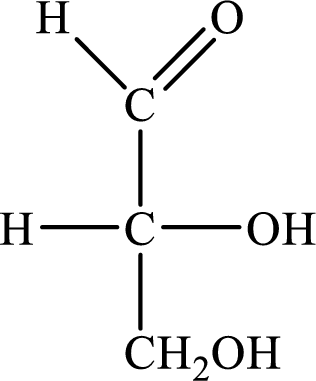
The monosaccharide,
(c)
Interpretation: The Fischer projection formula for
Concept introduction: The Fischer formula can be drawn by using the following rules.
- Ø The chiral center is assumed to be in the plane of paper.
- Ø Two of the bonds are considered pointing towards the page.
- Ø Two of the bonds are considered pointing outwards of the page.
- Ø The intersection of horizontal and vertical lines represents the chiral center.
- Ø The horizontal lines are the lines pointing outwards of the page.
- Ø The vertical lines are the lines pointing towards the page.
(c)
Answer to Problem 18.63EP
The Fischer projection formula for

Explanation of Solution
The given molecule is

The monosaccharide,
(d)
Interpretation: The Fischer projection formula for
Concept introduction: The Fischer formula can be drawn by using the following rules.
- Ø The chiral center is assumed to be in the plane of paper.
- Ø Two of the bonds are considered pointing towards the page.
- Ø Two of the bonds are considered pointing outwards of the page.
- Ø The intersection of horizontal and vertical lines represents the chiral center.
- Ø The horizontal lines are the lines pointing outwards of the page.
- Ø The vertical lines are the lines pointing towards the page.
(d)
Answer to Problem 18.63EP
The Fischer projection formula for
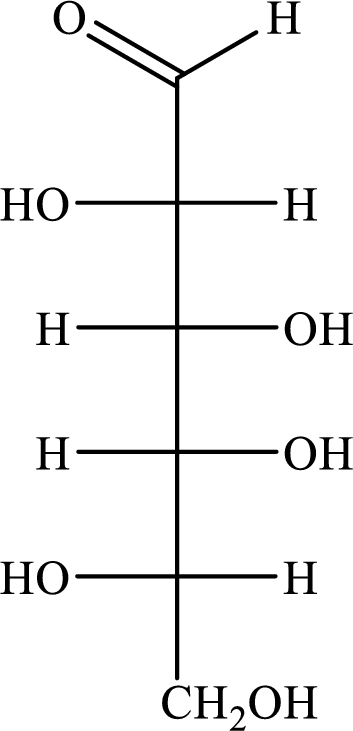
Explanation of Solution
The given molecule is
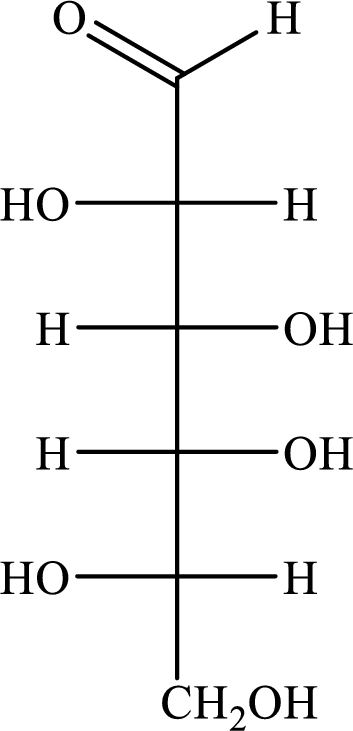
The monosaccharide,
Want to see more full solutions like this?
Chapter 18 Solutions
General, Organic, and Biological Chemistry
 General, Organic, and Biological ChemistryChemistryISBN:9781285853918Author:H. Stephen StokerPublisher:Cengage Learning
General, Organic, and Biological ChemistryChemistryISBN:9781285853918Author:H. Stephen StokerPublisher:Cengage Learning Organic And Biological ChemistryChemistryISBN:9781305081079Author:STOKER, H. Stephen (howard Stephen)Publisher:Cengage Learning,Chemistry: Matter and ChangeChemistryISBN:9780078746376Author:Dinah Zike, Laurel Dingrando, Nicholas Hainen, Cheryl WistromPublisher:Glencoe/McGraw-Hill School Pub Co
Organic And Biological ChemistryChemistryISBN:9781305081079Author:STOKER, H. Stephen (howard Stephen)Publisher:Cengage Learning,Chemistry: Matter and ChangeChemistryISBN:9780078746376Author:Dinah Zike, Laurel Dingrando, Nicholas Hainen, Cheryl WistromPublisher:Glencoe/McGraw-Hill School Pub Co Chemistry & Chemical ReactivityChemistryISBN:9781337399074Author:John C. Kotz, Paul M. Treichel, John Townsend, David TreichelPublisher:Cengage Learning
Chemistry & Chemical ReactivityChemistryISBN:9781337399074Author:John C. Kotz, Paul M. Treichel, John Townsend, David TreichelPublisher:Cengage Learning Chemistry & Chemical ReactivityChemistryISBN:9781133949640Author:John C. Kotz, Paul M. Treichel, John Townsend, David TreichelPublisher:Cengage Learning
Chemistry & Chemical ReactivityChemistryISBN:9781133949640Author:John C. Kotz, Paul M. Treichel, John Townsend, David TreichelPublisher:Cengage Learning World of Chemistry, 3rd editionChemistryISBN:9781133109655Author:Steven S. Zumdahl, Susan L. Zumdahl, Donald J. DeCostePublisher:Brooks / Cole / Cengage Learning
World of Chemistry, 3rd editionChemistryISBN:9781133109655Author:Steven S. Zumdahl, Susan L. Zumdahl, Donald J. DeCostePublisher:Brooks / Cole / Cengage Learning





